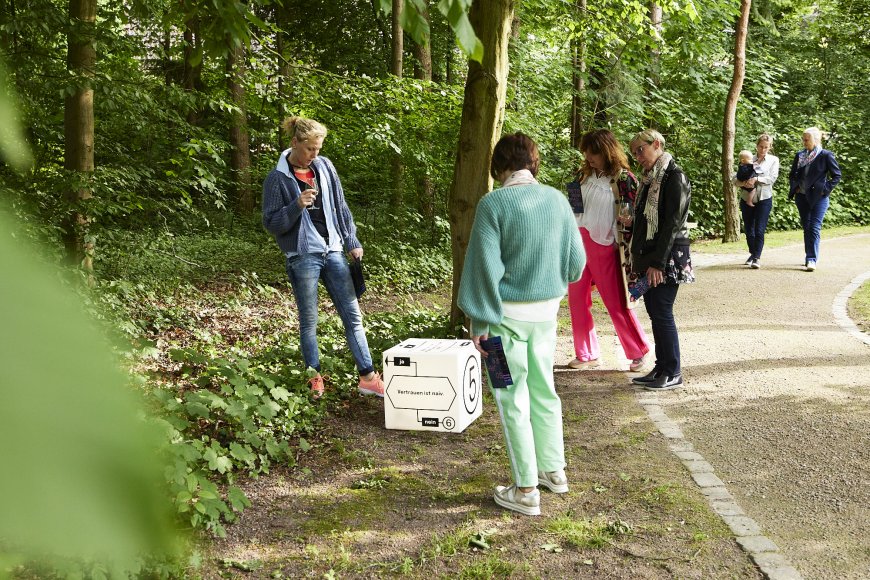
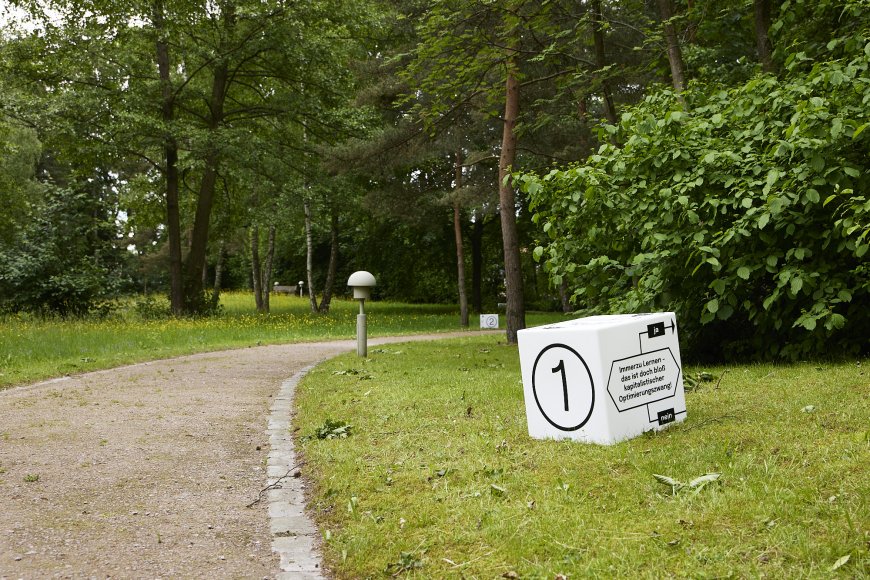
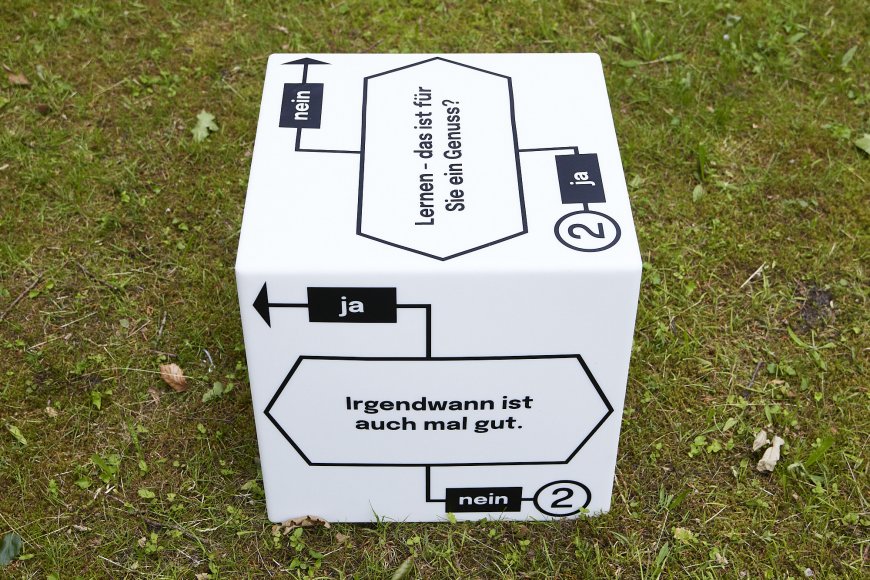
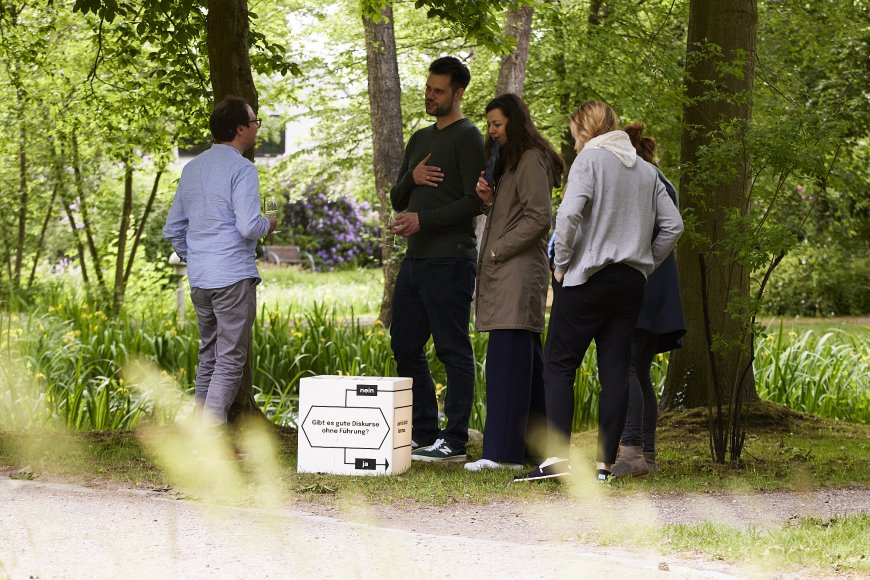
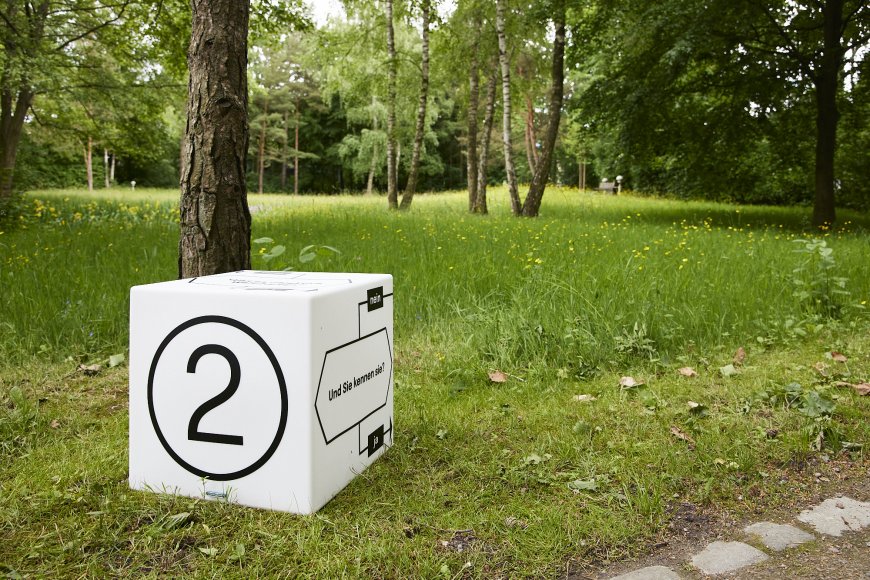
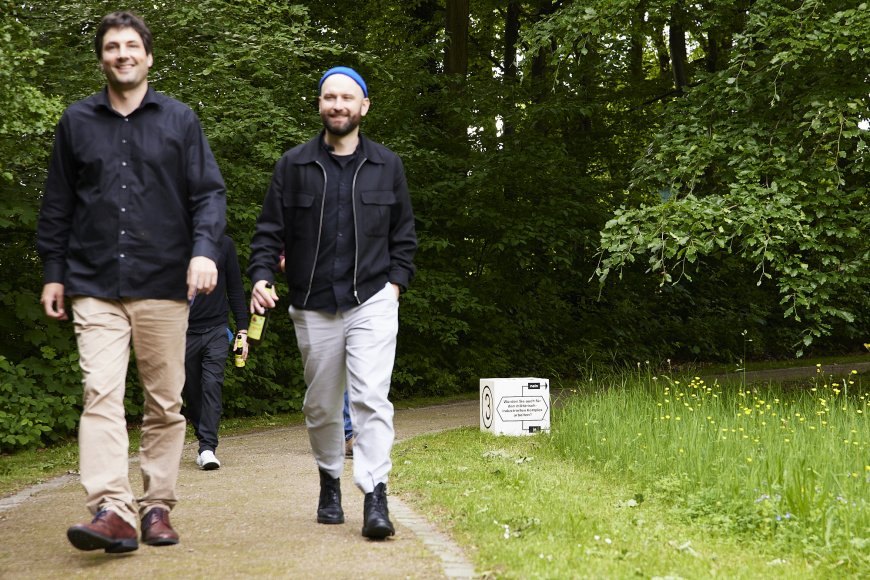
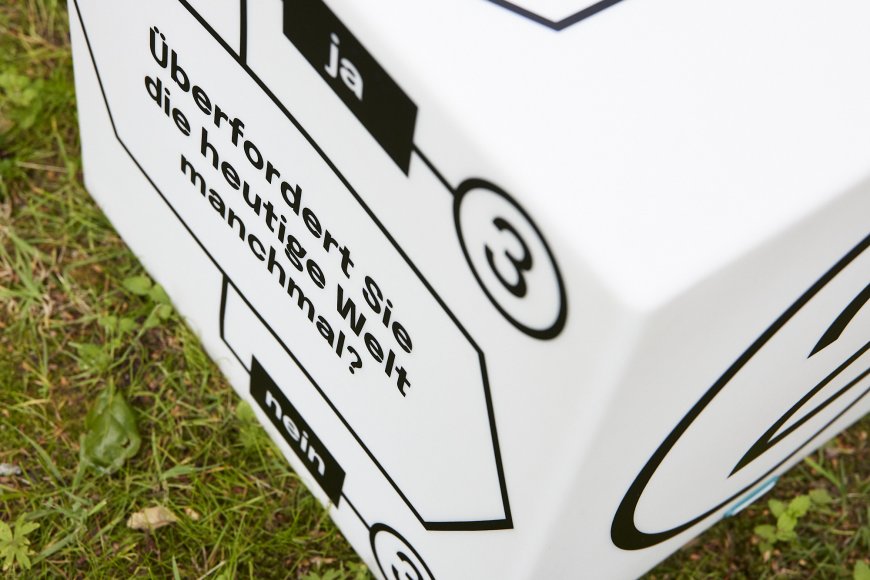
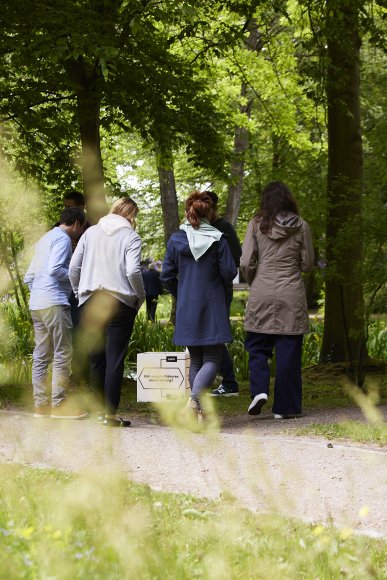
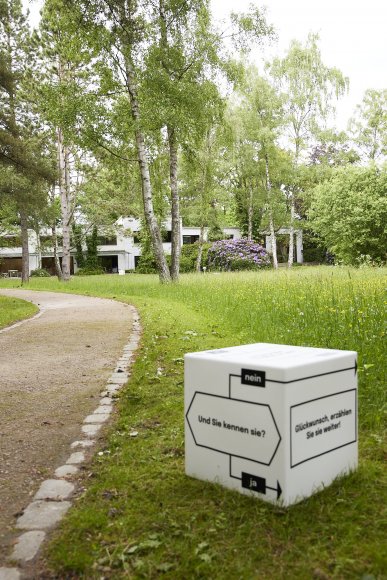
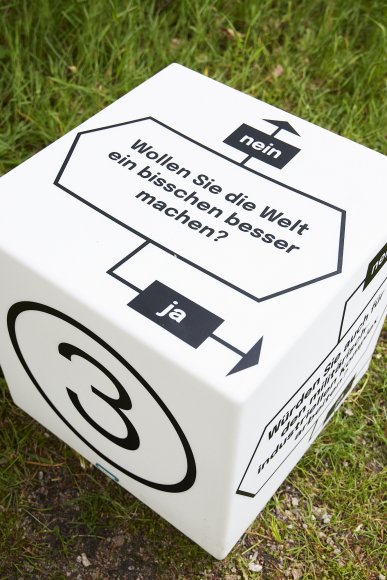
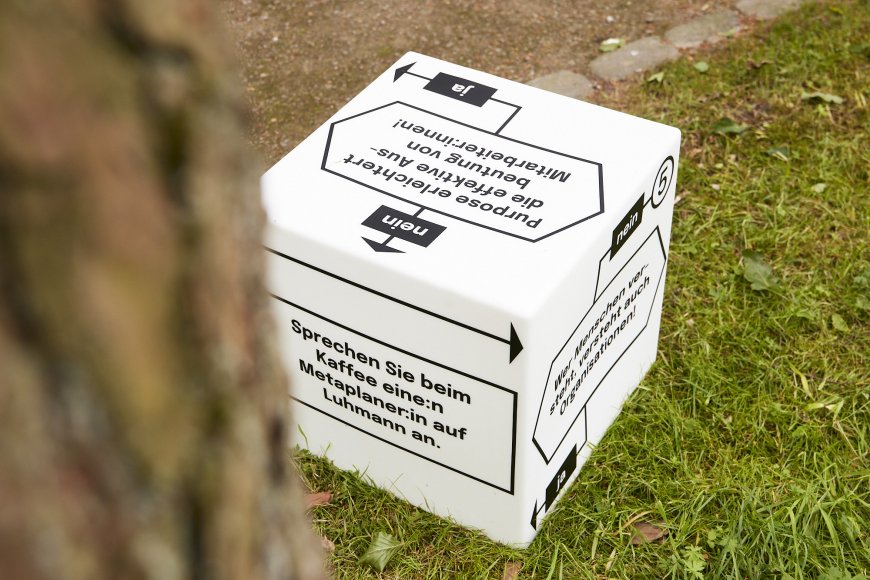
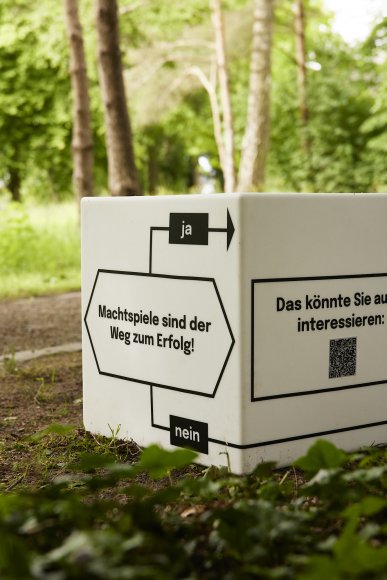
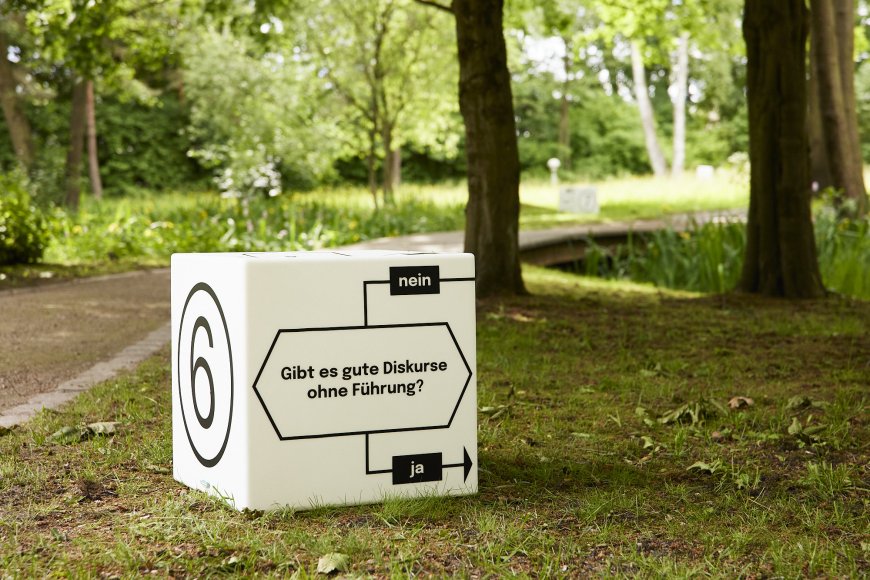
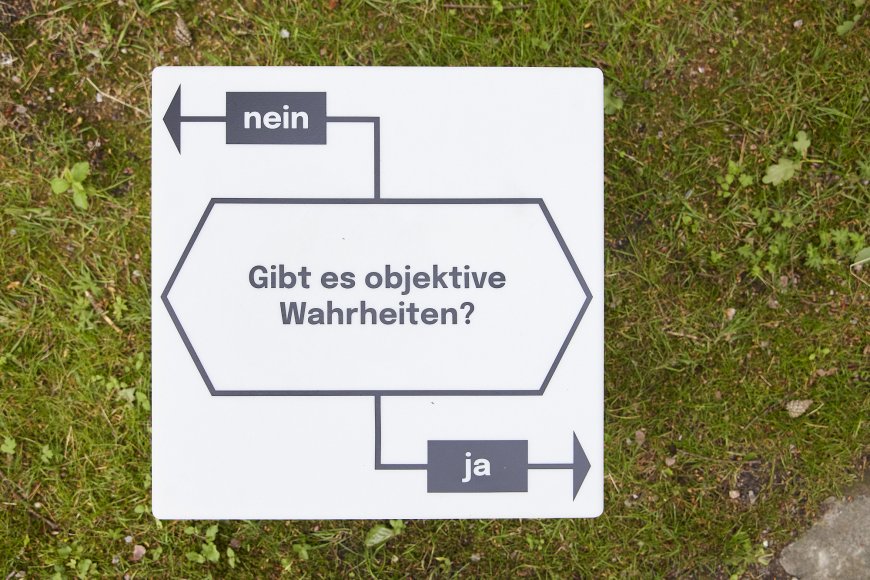
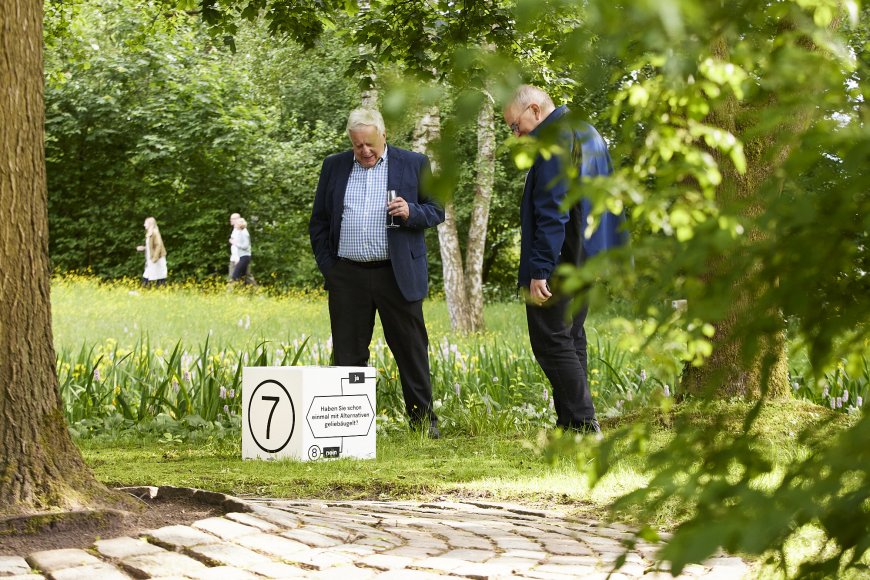
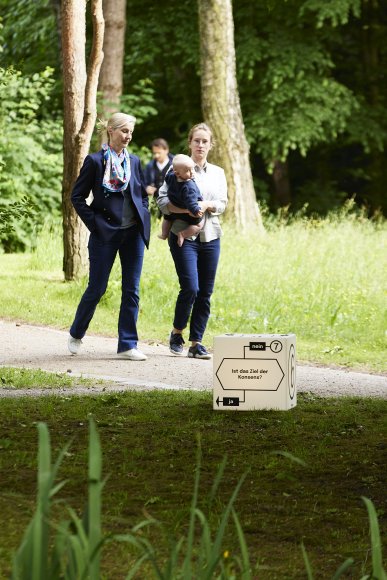
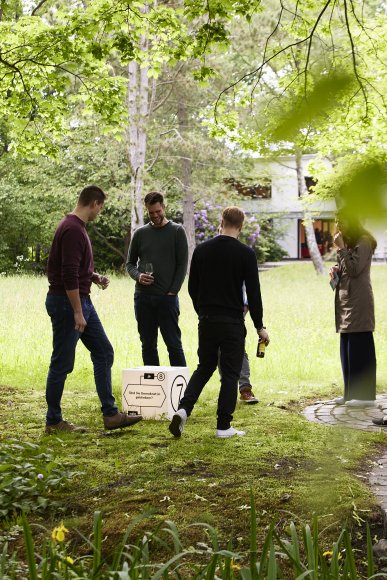
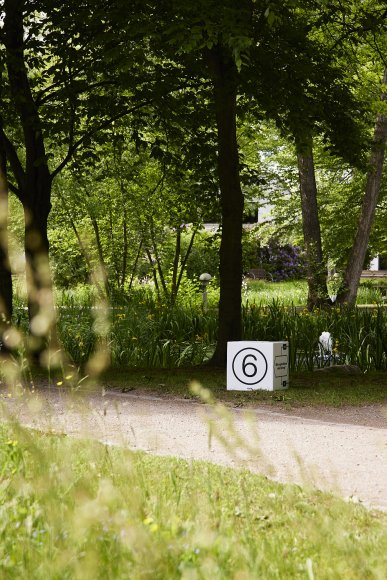
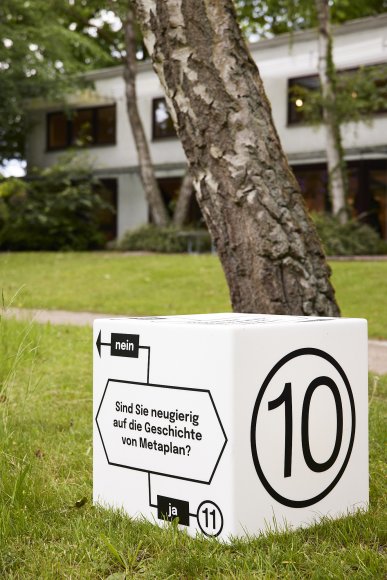
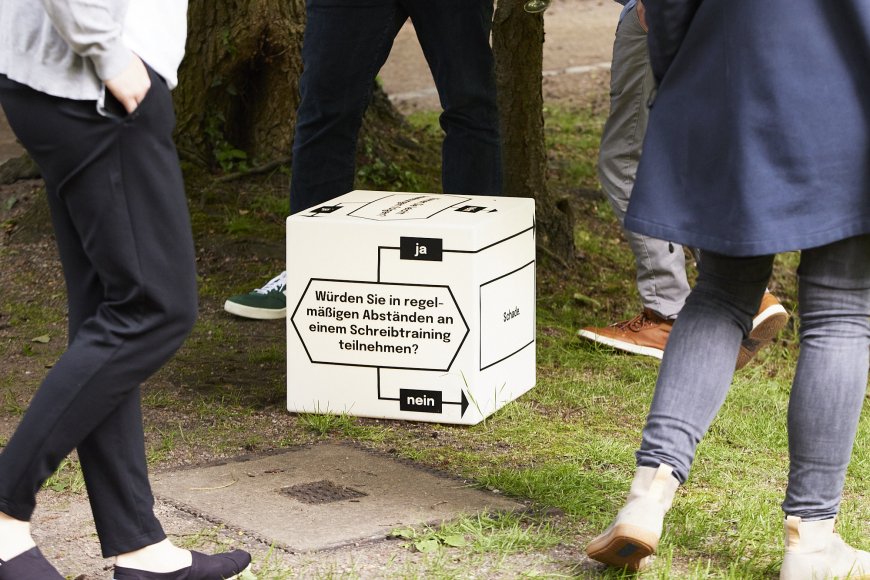
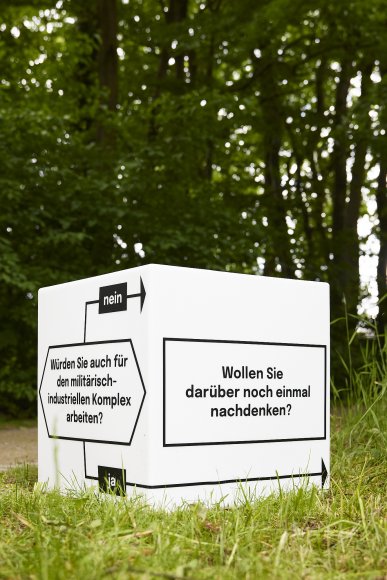
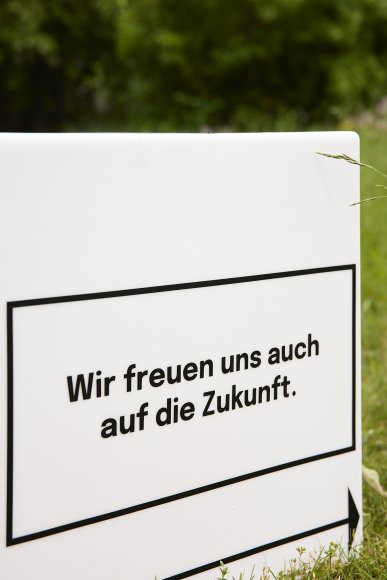
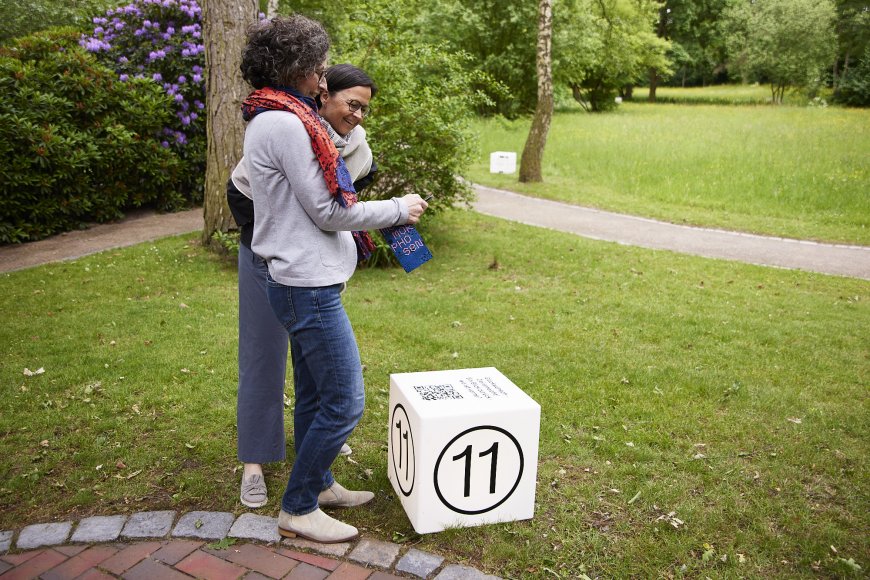
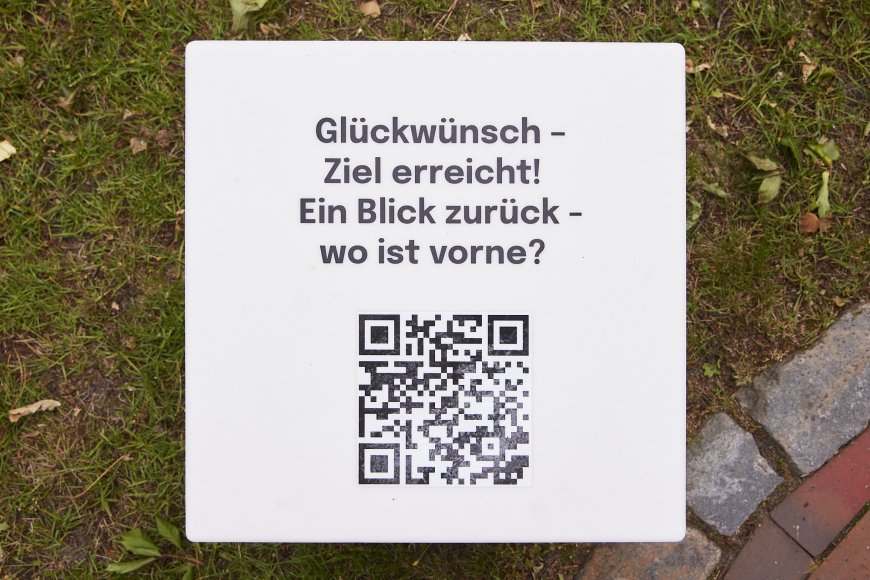
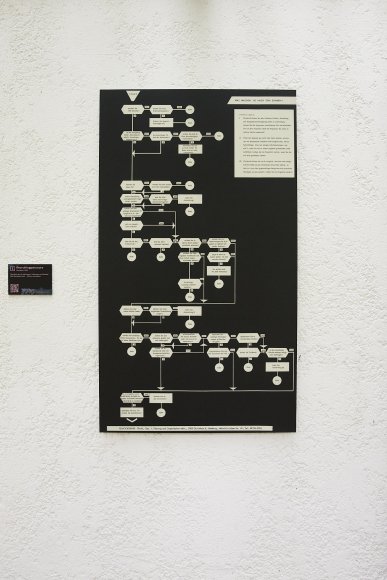
We invite you to a walk through the Metaplan Park – wandering through attitudes, attitudes in transition; learning how Metaplan ticks – past and present. Together with the artists’ collective Fünfzehn, we developed questions that guide you through our park in Quickborn on a kind of obstacle course.
The aim is to inspire clients, participants, guests and people interested in Metaplan to think and interact with us and our attitudes. The inspiration for this came from the past and the question of how it shapes our view of the future.

























Sometimes you can’t help but smile at the treasures you find in a company’s archives. In this case, the discovery of a historical poster from 1968 generated genuine excitement. Obviously designed as a recruiting poster, readers were asked to work their way through a landscape of questions starting with the question “Did you take your exam in 1968?” Some of the questions indicate they are suitability criteria for working for Quickborner Team: “Did you major in economics, business administration, sociology or psychology?” and “Can you read English books?”
Other questions are surprising: “Would you refuse to tackle something for which there is no method?”, “Do you discuss in church circles?”, “Do you sympathize with the views of the FAZ (a national newspaper)?”. Open questions alone do not confront readers with unsolvable problems. Here, however, you were supposed to decide on “yes” or “no” fast, and in case of doubt, the “end” threatened. Decisions and standpoints were challenged. This is exactly the threshold we would like to lead our clients, participants, guests and Metaplan enthusiasts to more than 50 years later.
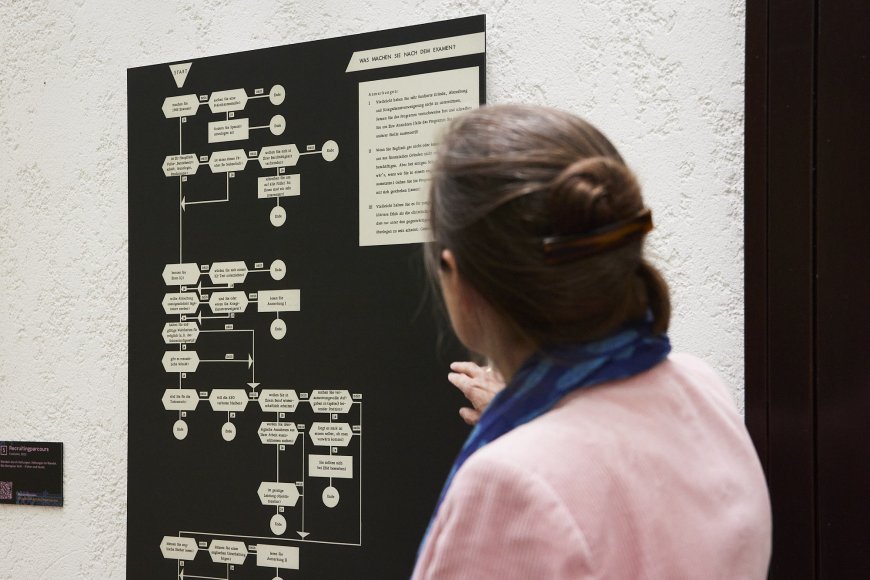
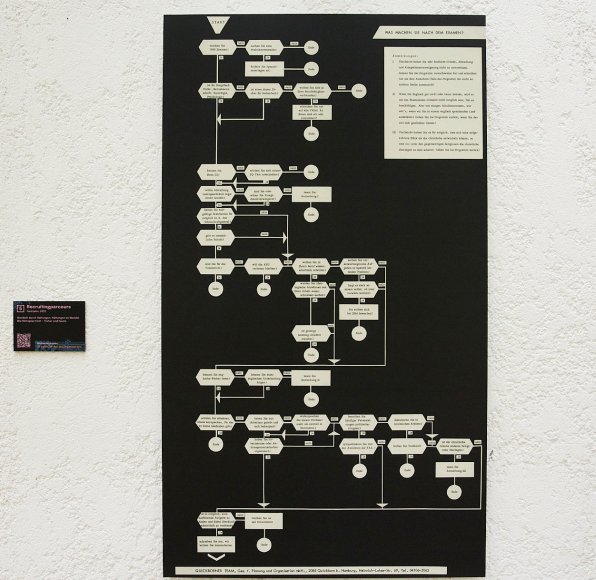
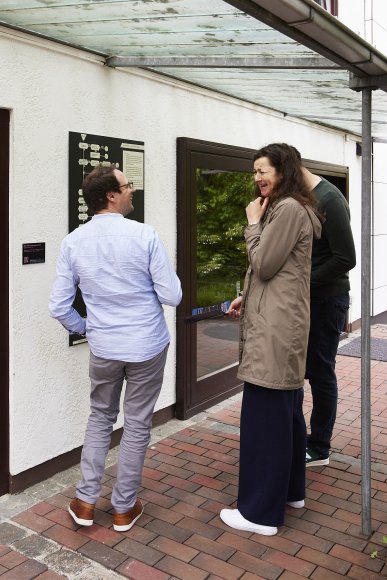
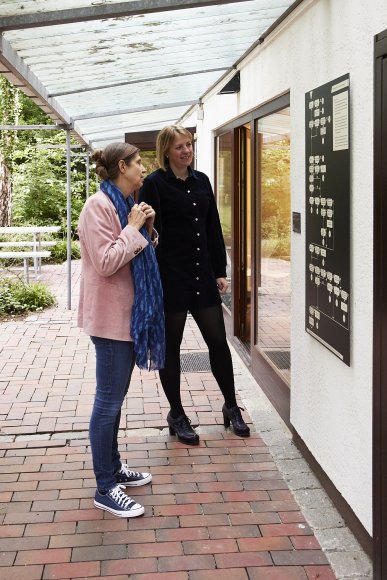
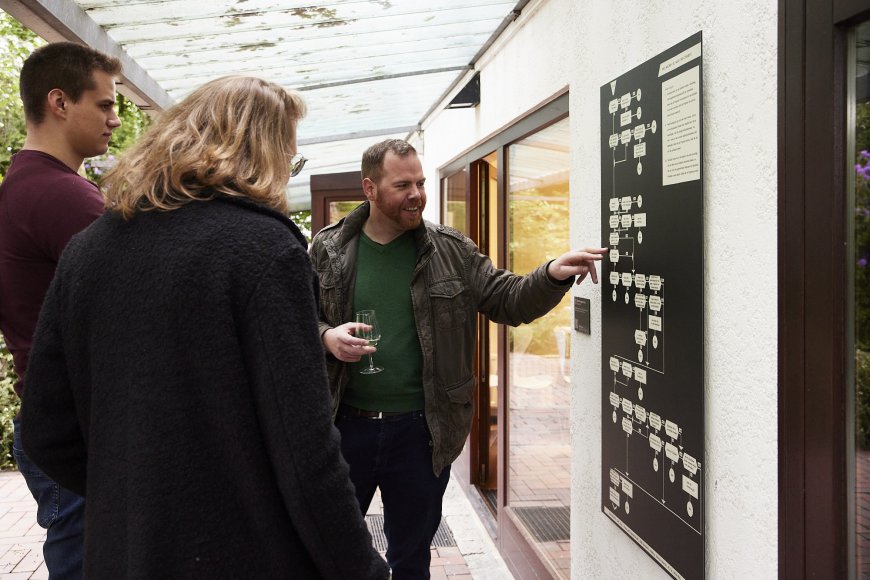
Hans-Jörg Mauch describes Quickborner Team in 1968 as a rapidly growing organization: “Starting in 1968, young consultants were recruited from the ’68 student movement. The aim was to recruit young consultants who would be able to challenge clients’ conventional views. However, they were not only challenging clients’ ‘authoritarian’ structures but also pursuing an internal change in Quickborner Team towards more democracy and equality. Despite these different currents and ways of thinking, Quickborner Team did not break up. The common bond was the consultants’ self-perception of being avant-garde. Whether in office planning, the development of organizational structures or healthcare planning, conventions and values were always being questioned. The consultants believed that good planning had to challenge habits, status and hierarchy.”
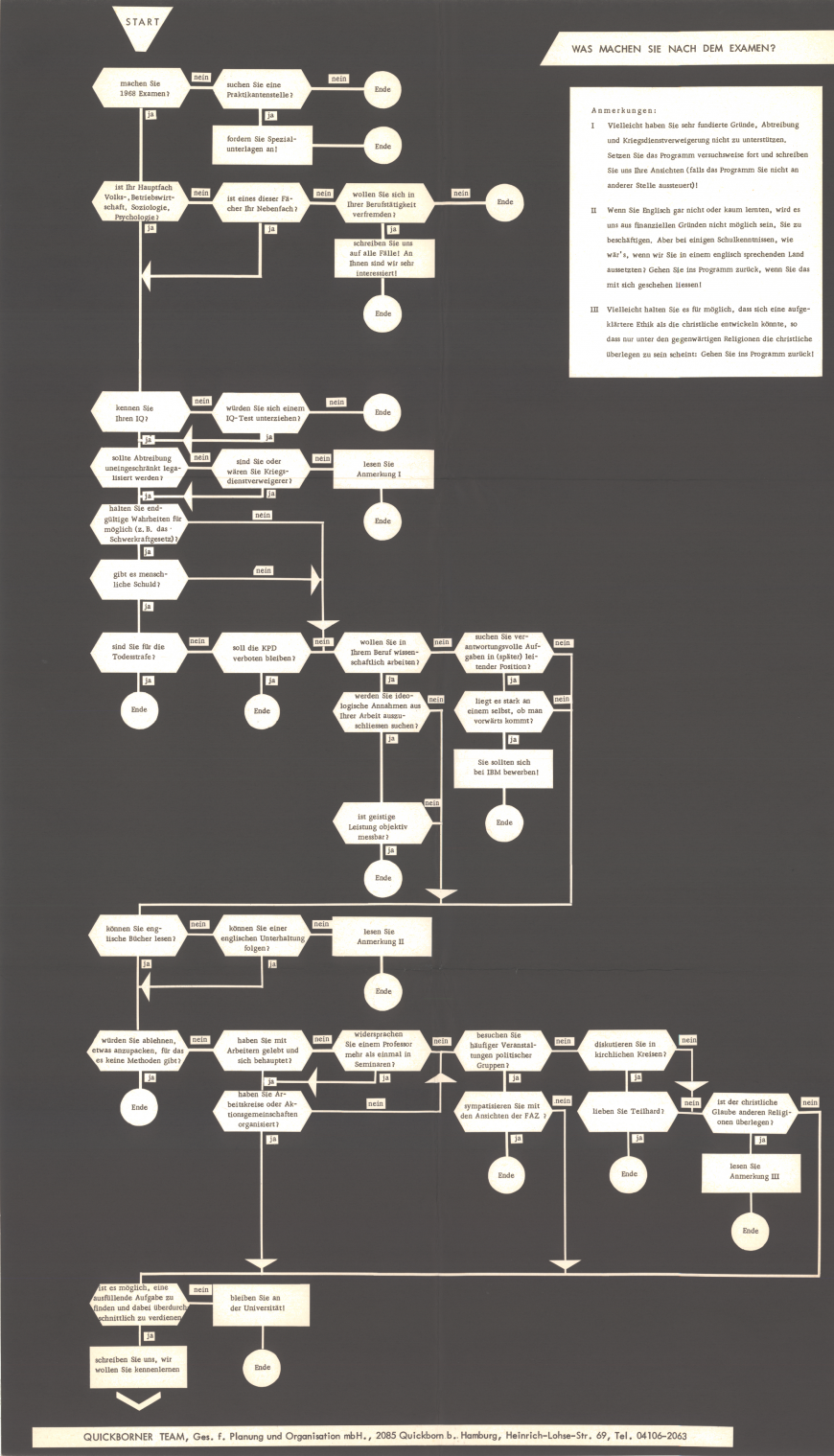
A description of what constitutes Metaplan from a merely internal perspective would be incomplete. That’s why we put together a variety of artistic positions that describe in different ways what constitutes Metaplan.
We’re looking back to ask ourselves what is to come. Welcome to the world of metamorphoses.
Transformation gets organizations moving – why a change of perspective can be worthwhile.
“We call our work planning” – questioning the present in organizations.
Between information markets and corridor gossip – experiencing the history of Metaplan in an unusual sound space.
Forms are lost and structures gained – how art can make interaction visible.
As a metaplanner striving for unambiguity in her statements, Tesle Schnelle Cölln’s art balances on the threshold between figuration and abstraction.
Visualization is the interaction of individual elements for an overall impression – in art and moderation.
From op-art to visual rhetoric – the art of moderation lies in the interweaving of individual elements.
Here, abstract geometric shapes are the basic elements of a visual language, through which communication develops into understanding.